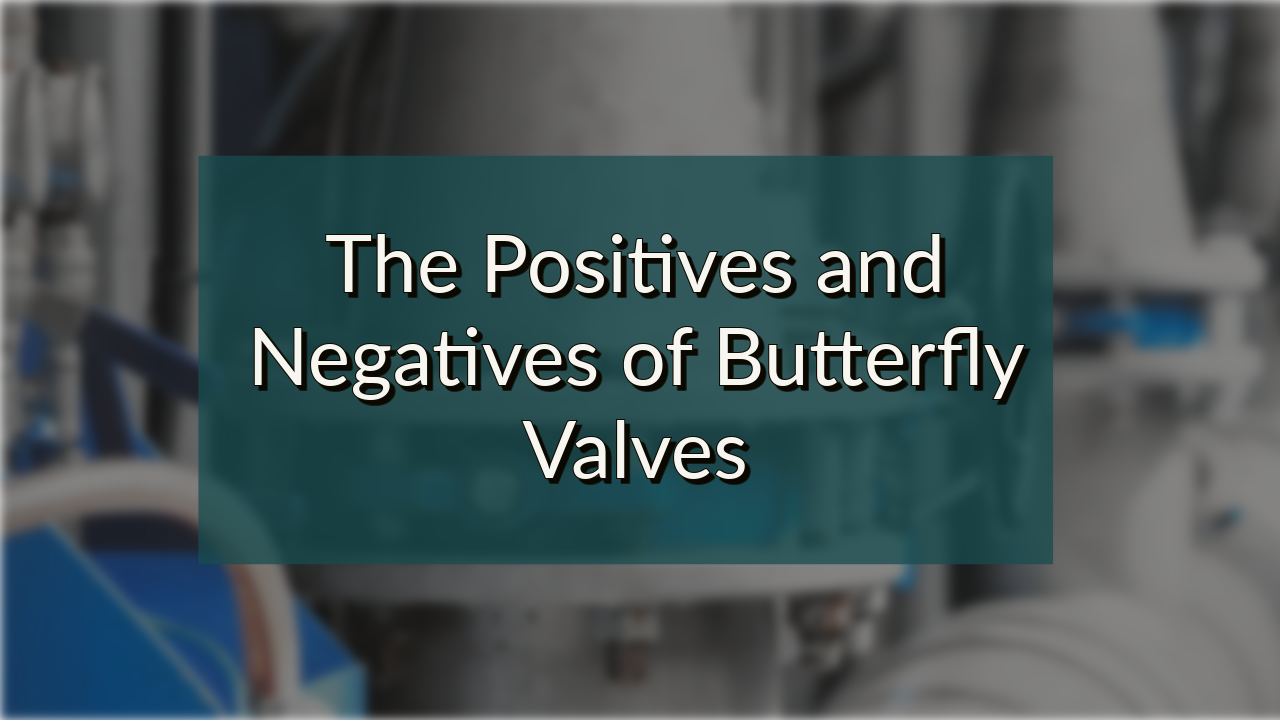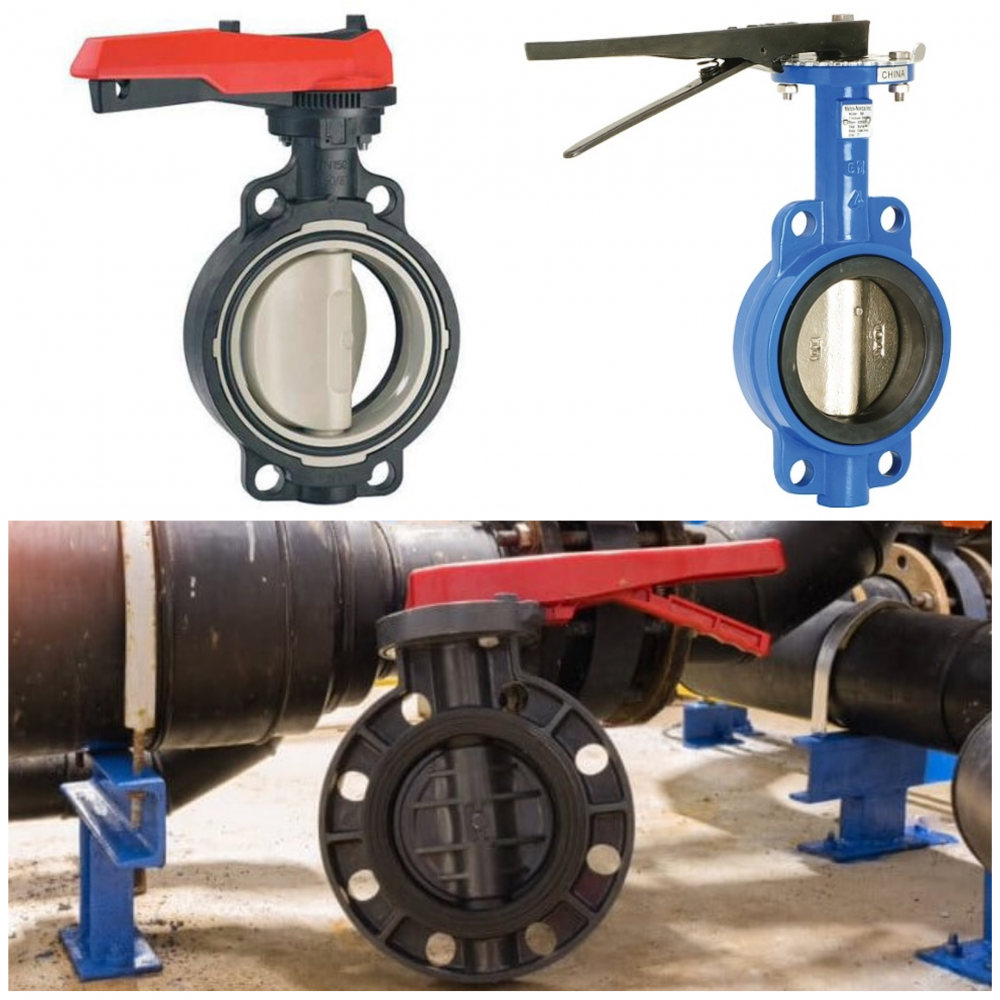The Positives and Negatives of Butterfly Valves

Welcome to the another edition of our blog post series, where we explore the pros and cons of different valve types used in industrial and commercial applications. In this article, we focus on butterfly valves and their key benefits, such as low cost and easy installation, as well as potential drawbacks like reduced flow capacity and sensitivity to pressure and temperature changes. Don't miss out on this valuable insight – check out our first edition blog post below and stay tuned for more informative articles in the series. We'll be covering the positives and negatives of other valve types in the near future, so be sure to check back for more valuable information.
Butterfly valves are a type of flow control device that are used in many different industries to regulate the flow of liquids and gases. These valves are characterized by a disk-shaped closure element that rotates around a central axis to open or close the flow path. Because of their simple and efficient design, butterfly valves are often preferred over other types of valves for many applications.

Positives
One of the major benefits of using butterfly valves is their ease of installation and maintenance. These valves are relatively lightweight and compact, in which making them easy to handle and install in tight spaces. Butterfly valves also have a simple design, which means that there are fewer parts that can break or wear out over time. This means that butterfly valves require less maintenance and can last longer than other types of valves.
Another benefit of using butterfly valves is their versatility. These valves can be used in a wide range of applications, from small-scale residential plumbing systems to large-scale industrial pipelines. They can also be used with a variety of different materials, including plastics, metals, and rubber. This means that butterfly valves can be used in a wide range of environments, resulting in being a versatile and cost-effective option for many applications.
Butterfly valves can also help improve energy efficiency in piping systems by minimizing the pressure drop across the valve. This reduces the energy required to maintain the flow of fluid or gas through the piping system. Butterfly valves also have a high flow rate, which allows them to handle large volumes of fluid or gas with minimal resistance, further improving energy efficiency. The combination of low pressure drop and high flow rate make butterfly valves an effective choice for improving energy efficiency.
Noise reduction is also important consideration in many industries, as excessive noise levels can be harmful to workers and can disrupt the surrounding environment. Butterfly valves can aid to reduce noise levels in piping systems by minimizing turbulence and cavitation in the flow path.
- Turbulence: is the chaotic movement of fluid or gas as it flows through a piping system. This can cause noise and vibration, which can be disruptive and potentially damaging to the piping system. Butterfly valves have a smooth flow path, which helps to minimize turbulence and reduce noise levels.
- Cavitation: is the formation and collapse of vapor bubbles in a fluid or gas. It can cause noise, vibration, and damage to the piping system. Butterfly valves have a smooth flow path that minimizes cavitation, which helps to reduce noise levels and protect the piping system.
Negatives
However, there are also some negatives to using butterfly valves. One of the biggest drawbacks is their limited flow control capabilities. Because butterfly valves are designed to regulate flow by rotating a disk-shaped element, they are not as precise as other types of valves. This means that they may not be the best option for applications that require precise flow control, such as in the chemical or pharmaceutical industries.
Butterfly valves are limited to a lower temperature range compared to other types of valves, such as ball valves or gate valves. This means that they may not be suitable for use in high temperature applications where the fluid or gas being transported exceeds their temperature range. It is important to carefully consider the temperature range of the fluid or gas when selecting a valve to ensure that it will function properly. In high temperature applications, a different type of valve may be necessary.
Another potential negative of using butterfly valves is their susceptibility to damage from debris and other foreign objects. Because the disk-shaped element of a butterfly valve is exposed, it is more vulnerable to damage from debris and other foreign objects that may be present in the flow. When a butterfly valve becomes damaged, it may not function properly, which can lead to reduced efficiency and increased downtime.
Despite these potential drawbacks given, butterfly valves are still a popular choice for many applications due to their ease of installation, low maintenance requirements, and versatility. It is important to carefully consider the specific requirements of an application before choosing a butterfly valve, as these specific valves may not be the best option in all cases. By taking the time to understand the benefits and negatives of using butterfly valves, you can make an informed decision and choose the best valve for your specific needs.
If you enjoyed this blog, please take the time to like us on Facebook, Instagram, Pinterest, or Twitter to keep apprised of the latest and greatest in drainage technology as well as get the latest exclusive deals! If you're making your first purchase, sign up for the newsletter to get a 1-time-use 5% off coupon!















Comments
Nice blog